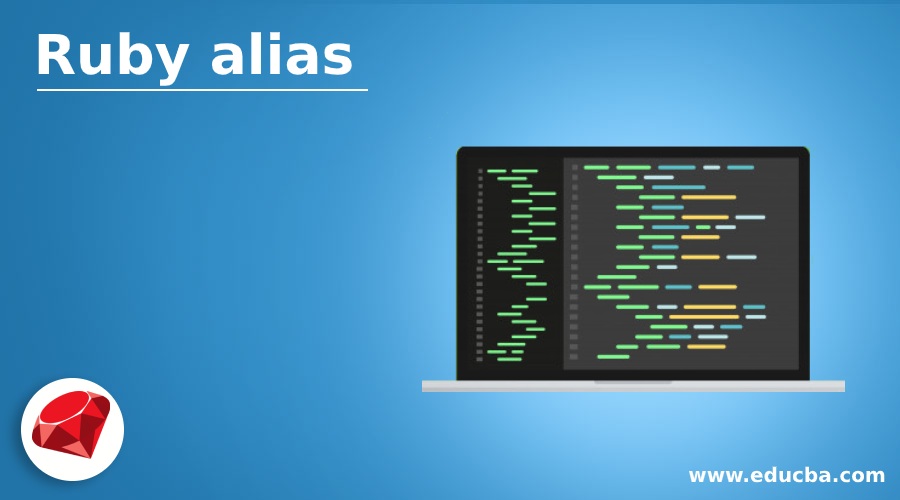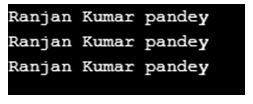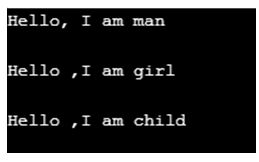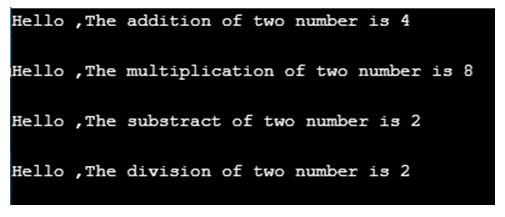Updated April 5, 2023
Introduction to Ruby alias
Ruby allows developer to define or rename for some specific purposes, here renaming means the older method behavior with new name. Basically alias is a keyword in the Ruby which takes two parameters one is the older name and another one is the new names, we use these things mostly when we feel there are some ambiguity inside the code for naming of the methods, this alias keyword will be more useful where we have too many method with similar names as we can rename those functions according to our understanding and according to the purpose of the methods which make it more understandable for other developers.
Syntax:
There could be two important syntaxes for it. We just need to mention the new name and old name for alias and a new name for the method will be created and we can access it with the new change name.
alias oldnamenewnamealias :oldname :newnameHow does alias Statement works in Ruby?
Given below is the working of alias statement in Ruby:
- Once we use keyword alias ruby expect two attributes one is the older name and another one is the new name which we want to assign.
- Outside the class object will have the changed name and at any instance we can access the method with the object of the class.
Examples of Ruby alias
Given below are the examples mentioned:
Example #1
In the below example we have created a Student class and inside the Student class we have created a method called studentName which is printing the name. Inside the same class we are renaming the methods with various new other methods names and we are using the changed names outside of the object of the Student class and getting the same outputs.
Defining a class and inside the class we are making alias of the names of the several functions for uses, and these functions will be available outside with the name of the alias we given.
Code
class Student
defstudentName
'Ranjan Kumar pandey'
end
#Creation of alias for methods simply renaming the method
alias student studentName
alias name student
alias identity name
end
s = Student.new
#Here we are calling the methods with the name which we have given for it as alias
puts s.studentName
puts s.name
puts s.identityOutput:
Example #2
In the below example we have created a Man class and inside the Man class we have created a method called studentName which is printing the name. Inside the same class we are renaming the method and using the changed name outside of the object of the Student class.
Defining a class and inside the class we are making alias of the names of the several functions for uses, and these functions will be available outside with the name of the alias we given.
Code:
class Man
def talk
"Hello, I can talk"
end
#Creation of alias for methods simply renaming the method
alias_method "#{name.downcase}_talk", :talk
end
#Here we are calling the methods with the name which we have given for it as alias
p Man.new.man_talkOutput:
Example #3
In the below example we have created a Human class and inside the Human class we have created some methods for different types of humans and these methods are printing their details. Inside the same class we are renaming the method and using the changed name outside of the object of the Student class.
Defining a class and inside the class we are making alias of the names of the several functions for uses, and these functions will be available outside with the name of the alias we given.
Code:
class Human
def boy
puts 'Hello, I am man'
end
def girl
puts 'Hello ,I am girl'
end
def child
puts 'Hello ,I am child'
end
#Creation of alias for methods simply renaming the method
alias :boyMessege :boy
alias :girlsMessege :girl
alias :childMessege :child
end
h = Human.new
#Here we are calling the methods with the name which we have given for it as alias
puts h.boyMessege
puts h.girlsMessege
puts h.childMessegeOutput:
Example #4
Below is the example where we have created a class called Cal and inside this class we are doing some arithmetic calculation, here inside the same class we are renaming the names of the class. We can see on the outside we are accessing the changed name of methods with exact same operations. Many times it is a good idea to rename a very big method for calculation which reduces the code size as well as it reduces the typing.
Defining a class and inside the class we are making alias of the names of the several functions for uses, and these functions will be available outside with the name of the alias we given.
Code:
class Cal
def addition(a,b)
puts "Hello ,The addition of two number is #{+b}"
end
def multiplication(a,b)
puts "Hello ,The multiplication of two number is #{a*b}"
end
defsubstract(a,b)
puts "Hello ,Thesubstract of two number is #{b-a}"
end
def division(a,b)
puts "Hello ,The division of two number is #{b/a}"
end
alias :add :addition
alias :mul :multiplication
#Creation of alias for methods simply renaming the method
alias :subs :substract
alias :div :division
end
c = Cal.new
#Here we are calling the methods with the name which we have given for it as alias
puts c.add(2,4)
puts c.mul(2,4)
puts c.subs(2,4)
puts c.div(2,4)Output:
Conclusion
From these tutorials we learned about the basics of the alias in Ruby, we also learned about the working of the alias, we came to know that we can use alias where we have many libraries and other methods to create misunderstanding then we rename the method for our own understanding.
Recommended Articles
We hope that this EDUCBA information on “Ruby alias” was beneficial to you. You can view EDUCBA’s recommended articles for more information.






